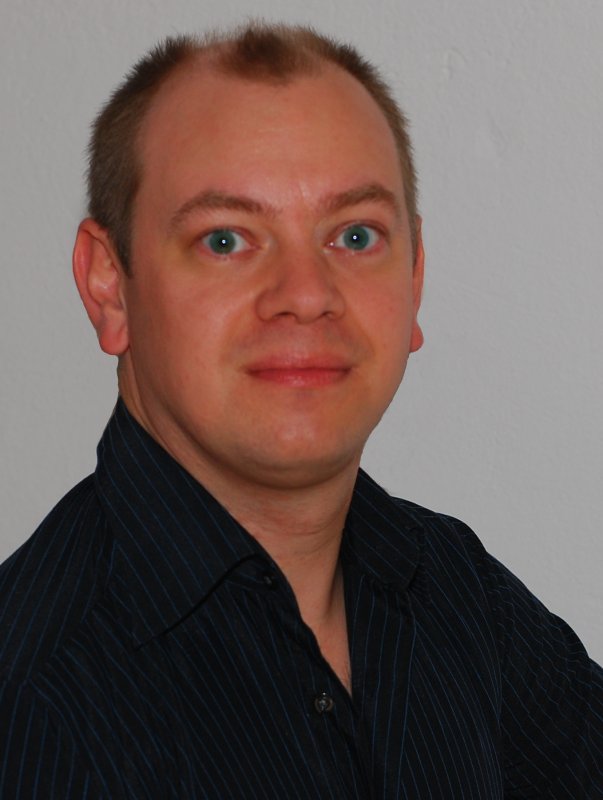
|
|
|
PA11 Pathway Analysis and Modeling of Biological Networks |
|
Deadline for applications: October 10th 2011 Notification of acceptance date: October 12th 2011 Course date: October 19th - October 20th 2011 Note: This course is immediately followed by the PathProt brainstorming workshop. PathProt is an independent open discussion forum about Pathway Analysis in Proteomics, since 2008. Optional registration must be taken separately (use the PathProt website). PathProt accomodation options are available from Oct 18 to Oct 23rd. |
Instructors: |

Christoph Wierling studied Biology at the University of Munster and obtained a PhD in biochemistry at the Free University of Berlin. His research interest focus on modeling and simulation of biological systems and the development of systems biology software. Currently he works as a group leader of the systems biology group at the Max Planck Institute for Molecular Genetics in Berlin. He participated in the PA09 Pathway Analisis course of GTPB as an instructor and in PathProt-II as a speaker. Max Plank Institute, Berlin, Germany |

Alexander Kel holds the position of Senior Vice President Research and Development. Dr. Kel was involved in research in practically all fields of bioinformatics, from molecular evolution, and structural biology to database development, application of machine learning techniques and sequence analysis. In the recent years his interests shifted considerably towards system biology including structural analysis of signal transduction and gene regulatory pathways and dynamic modelling of regulatory circuits of such complex cellular processes as cell cycle, differentiation and apoptosis. He participated in all the Pathway Analysis and in all the Hunting for Genes and Promoters courses of GTPB as an instructor. He is a co-founder of PathProt together with Roman Zubarev and Pedro Fernandes. GenExplain GmbH, Wolfenbuettel, Germany |

Roman Zubarev studied technical physics in the Moscow Engineering Physics Institute and received his PhD in Ion Physics from the Uppsala University, Sweden. After postdoc training in Fred W. McLafferty's group at the Cornell University in USA, he became associate professor at the Chemistry Department in Odense, Denmark. In 2002 he came back to the Uppsala University as full professor, and became engaged in proteomics work. He is a Director of HUPO, and an awardee of the prestigious Carl Brunnee award (ISMS, 2006) and Biemann medal (ASMS, 2007) for his work in mass spectrometry. Roman Zubarev has published more than 130 peer-reviewed papers, and has several patents. He teaches courses related to mass spectrometry and proteomics analysis. He participated in all the Pathway Analysis and in the PA09 Proteomics Data Analysis courses of GTPB as an instructor. He is a co-founder of PathProt together with Alexander Kel and Pedro Fernandes. Karolinska Institutet, Stockholm, SE |
Course description:New high-throughput methods allow for the generation of massive amounts of molecular biological data. These, mainly phenomenological, data are often difficult to relate with the activation/inhibition of particular signal transduction pathways and/or transcriptional regulators. A way to facilitate data interpretation is to construct gene regulatory network models that include signal transduction mediators, transcriptional regulators and target genes. This is a complex task, not only because of the huge number of molecules involved, but also because of variations across tissues, developmental stages and physiological conditions. These networks hold the key to the understanding of the regulatory processes within a cell, the processes governing human physiology and homeostasis and thus the delicate balance between health and disease. These networks are characterized by complex, hierarchical structures and by multiscale temporal and spatial behaviors.
In the PA11 training course "Pathway Analysis and Modeling of Biological Networks" we will approach the analysis and modeling of biological systems from several practical angles. First of all, we will introduce into systems biology and modeling from a network-based perspective. We will introduce several pathway databases, such as Reactome, KEGG, and ConsensusPathDB, and describe how to use these resources for pathway analysis. Next, we will give an introduction into mathematical modeling of biological systems and we will look at different mathematical modeling stategies using Boolean networks, Petri nets and ordinary differential equation
systems (ODEs). We will describe computational tools, such as Cytoscape and CellDesigner, for the set-up and development of model prototypes and show further tools, such as Copasi and PyBioS that can be use for
parameter-fitting and sensitivity analysis.
Furthermore, we will look at methods for reconstructing gene regulatory networks from gene expression data through reverse engineering. It will be followed by methods of analysis of topological properties of
biochemical and regulatory networks. This will lead us to the application of such methods for revealing key nodes in networks as potential biomarkers or drug targets. We will study how to do the in-silico hypothsis testing of such drug targets with the help of dynamic modeling of the network systems. We will also look at chemoinformatics methods to analyze lists of drug targets and identify novel drug compounds by virtual screening of millions of available chemical molecules. We will then show examples of application of these methods for identification of disease related biomarkers and drug discovery. |
|
Detailed Program |
|
Instituto Gulbenkian de Ciência, Apartado 14, 2781-901 Oeiras, Portugal Last updated: September 12nd 2011 |